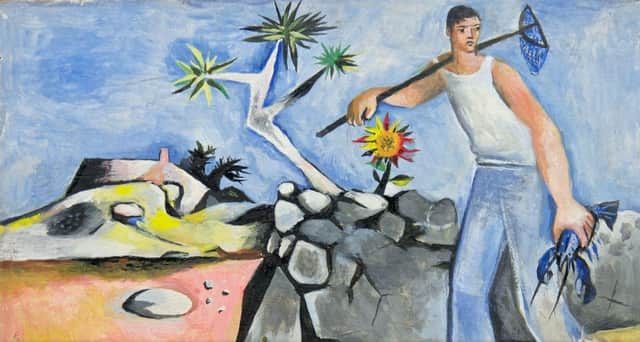Chichester gallery celebrates the life and work of John Craxton


John Craxton: A Modern Odyssey (October 28 2023-April 21 2024) will follow Craxton’s career from the works he created in wartime Britain in the early 1940s to the vibrant paintings and drawings inspired by his beloved and adopted homeland of Greece that he made from 1946 until his death.
The exhibition will feature more than 100 works including paintings, drawings, prints, ceramics, set designs and book-jacket designs. Positioning Craxton within the historical and social context of both mid-century Britain and Greece, the exhibition will explore the artist’s extensive travels, his experiences of exile and confinement and his enduring defiance of convention as a bohemian and openly gay man.
Advertisement
Hide AdAdvertisement
Hide AdPallant House Gallery director Simon Martin said: “The exhibition will begin in 1940s Britain when Craxton created works influenced by British Romantic art and the landscape of England and Wales. His paintings from the time capture the zeitgeist of wartime Britain and his personal feeling of entrapment. He adopted dark and lamenting tones, as seen in Hare on a Table (1944-46), which he began while staying with painter and friend EQ Nicholson. Other works on display created during this period can be read as emblematic self-portraits, showing Craxton’s preoccupation with loneliness and menacing landscapes, such as Poet in Landscape (1941) and Dreamer in Landscape (1942).
“As the Second World War ended, so began Craxton’s personal celebration of colour, which was informed by the ability to travel and dominated the rest of his career. In 1945, Craxton met socialite Sonia Leon when he visited the Isles of Scilly with Lucian Freud. Three years later he began to paint her, resulting in one of his most haunting works, Portrait of Sonia (1948-57) which will be on show in the exhibition. In early 1946 Craxton met Pablo Picasso in Paris and in the spring, aged 23, he arrived in Greece, where he would eventually settle. Greek Fisherman (1946) and Three Greek Men Dancing (1946) pay stylistic homage to Craxton’s new acquaintance, and further representing the sexual liberation that he felt in Greece, as well as his fascination with conscripted sailors and soldiers who danced in tavernas on free evenings. Other highlights on show from this period will include Head among Leaves (1948) and Greek Fisherman (Seated Boy from Hydra) (1960), which embody Craxton’s vivacious Greek reawakening, inspired by the light, heat, landscapes and the people he met.
“In 1960 Craxton made his home in Chania, Crete, but he continued to travel widely in Greece and across the Mediterranean. His fascination with Greek culture and mythology can be seen in the work Two Greek Dancers (1951), made for the dancer and choreographer Frederick Ashton while he was working on Daphnis and Chloë at the Royal Opera House (for which Craxton also designed the set). Craxton however favoured painting ordinary people in everyday scenes, as seen in works such as Greek Head (1950-51), Fisherman with a Basket (1951) and Hydra landscape painting Two Figures and Setting Sun (1952–67). In 1967, Craxton was exiled back to Britain due to a right-wing military dictatorship in Greece. Entrapped once again, Craxton travelled to Edinburgh where he worked until returning to Greece in 1976. The final part of the exhibition will present some of Craxton’s most compelling works made in Greece, from the 1970s until his death in 2009. These will include original drawings for book covers made for Patrick Leigh Fermor and works such as Cretan Cats II (2003), a painting of Craxton’s pets in his kitchen, and Still Life with Three Sailors (1980–85), which depicts his connection to the domestic, convivial life he enjoyed in Greece.”
The exhibition will be shown alongside a display of works by Craxton’s contemporaries, including Lucian Freud, Robert MacBryde, Robert Colquhoun, John Minton, Paul Nash and John Piper etc.